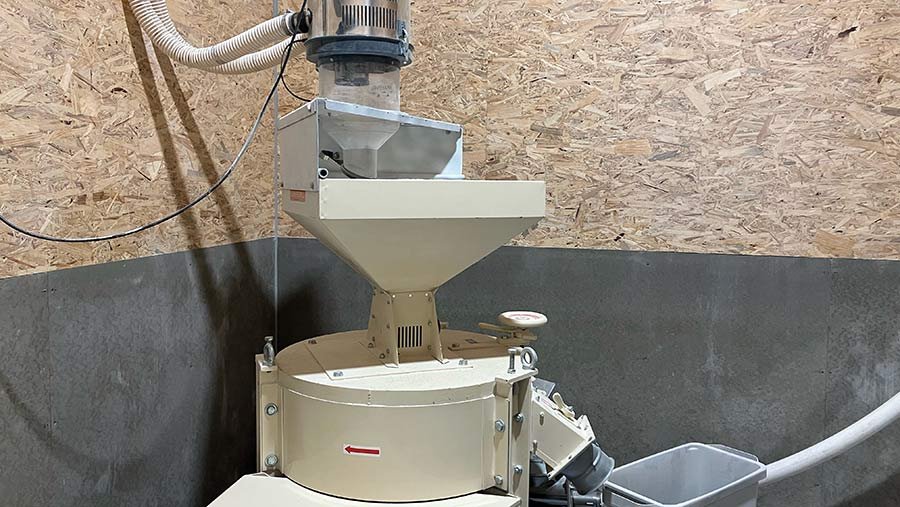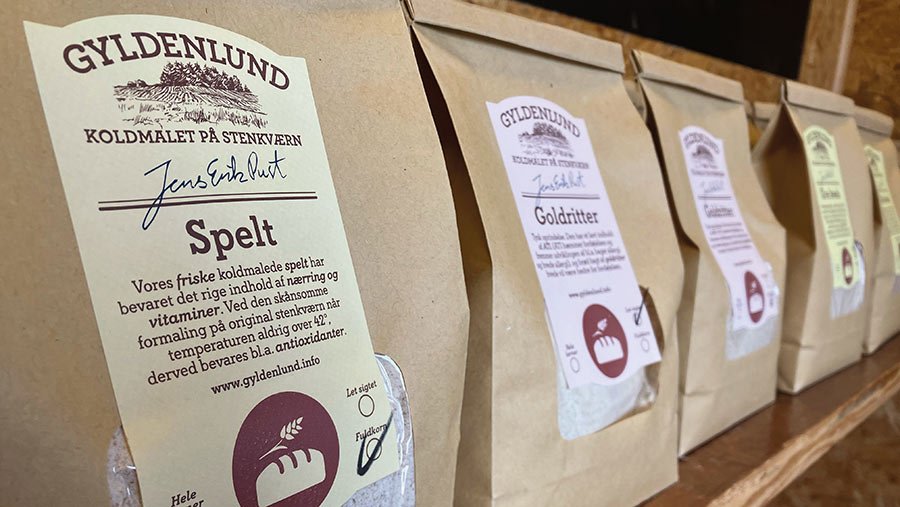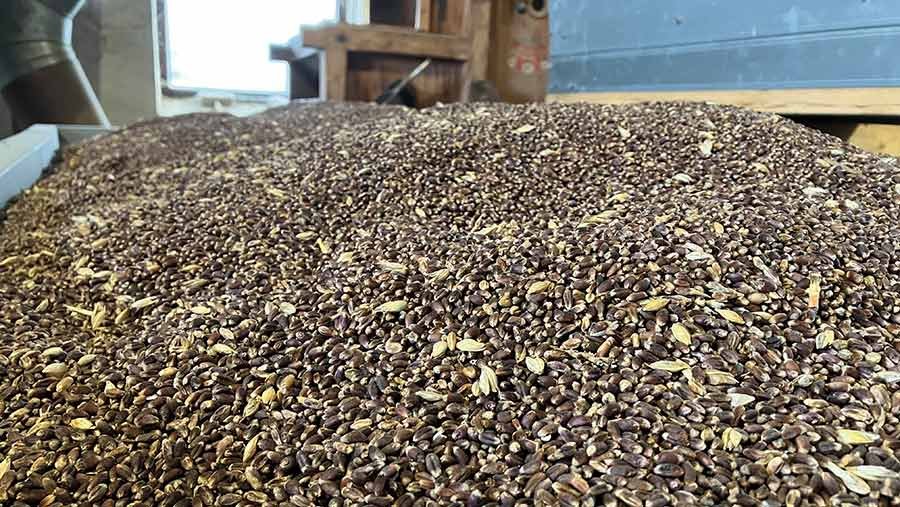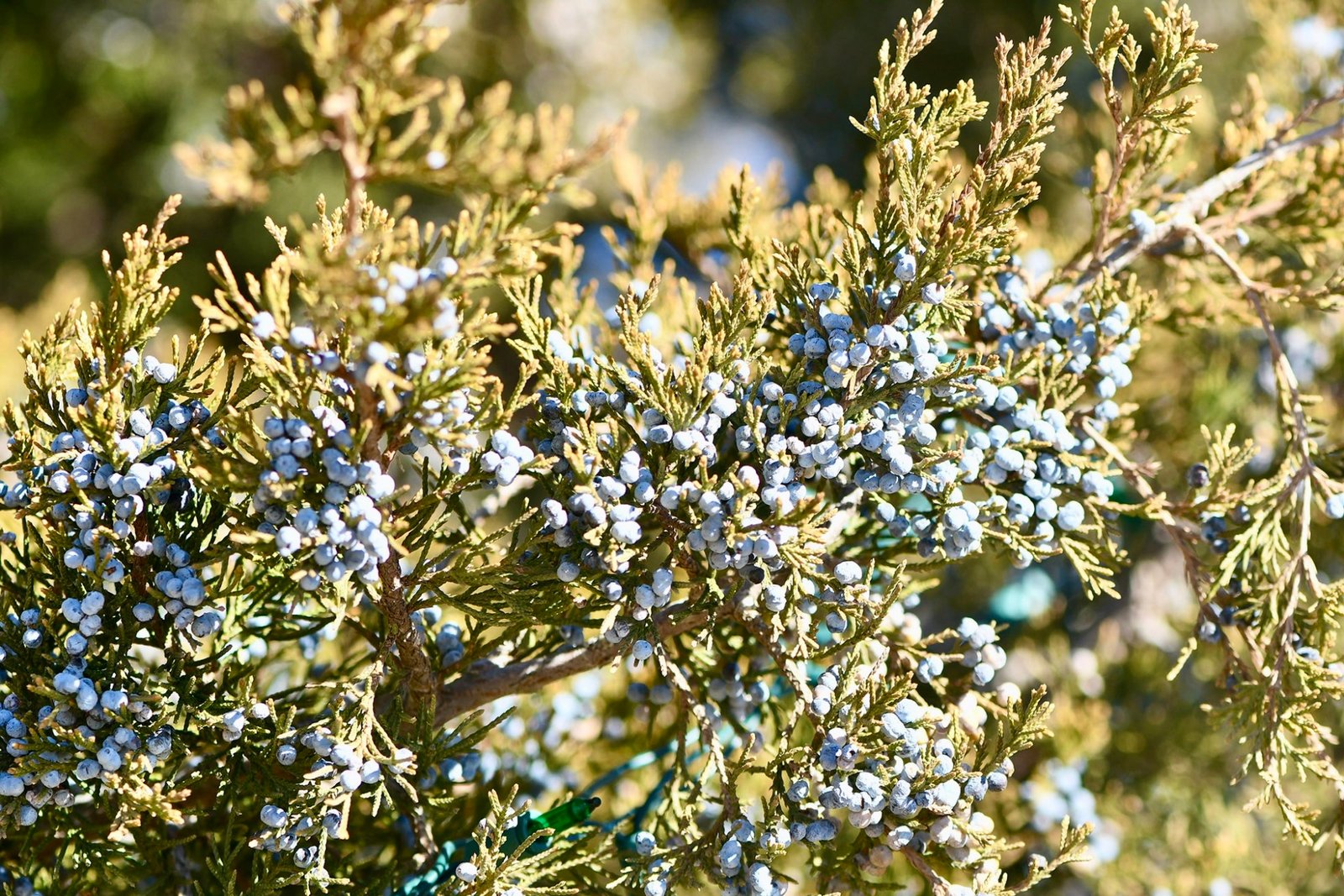Growing and milling a range of heritage cereals, including purple wheat and sweet rye, forms the heart of Jens Erik Pust’s family farm business near the Danish town of Julesminde.
Mr Erik Pust’s journey to specialising in heritage varieties began when he developed a minor gluten intolerance and researched alternative, healthier and more natural food options.
He started with two cultivars – the Swedish wheat variety Öland and a traditional crop of spelt – and now grows 13 different varieties, each with its own unique flavour and texture.
See also: Farmer Focus: Airport, autograph and a farewell
Jens Erik Pust in his farm shop © MAG/Emma Gilbard
Flour sales
Mr Erik Pust decided to set up a mill and market his grains and flour direct under the Gyldenlund (“Golden Grove”) brand.
With a background selling value-added outdoor pork direct to consumers in a previous pig enterprise, together with his current full-time job in the fertiliser sales industry, selling his goods direct seemed a logical business move.
“If you have a product to sell, it’s best to cut out the middleman and sell it yourself in order to improve profitability,” he says.
In 2014, as the pig markets began to fall, the farm’s final animals were sold and the first heritage varieties were planted.

Grain is grown, milled and packed on farm under the Gyldenlund brand © MAG/Emma Gilbard
The mill was installed and the business began to grow. He initially aimed to sell 80% of his flour direct to consumers, but soon discovered that this target was too high.
“Most people wanted cheap, convenience foods and did not want to make their own bread,” he says. Instead, his main buyers were local restaurants, hotels and even an agricultural college.
When Covid-19 struck he lost 90% of sales and was thankful his job in the fertiliser industry continued to pay the bills.
The flour business has since rebounded and he has set up a small farm shop and a website for online sales.
Milling
Flour is made fresh to order, meaning customers are supplied with a quality product and he is able to save 15-20% of flour when made fresh compared with grains which are 3-4 months old.
On average, 20t of flour is sold each year, which Mr Erik Pust grows, mills, packs and labels on the 60ha farm. He plans to scale this up to 1t of flour a week.
Whole grains are also sold, alongside a traditional Danish salad dish complete with a range of cereals and vinegar dressing.

© MAG/Emma Gilbard
The varieties: Description, agronomy and yields
Each of the 13 heritage varieties grown is carefully selected for its unique flavour as well as agronomic traits.
“Sweet rye, Öland and Scala wheat are the best sellers, but newcomer blue wheat has real potential,” says Jens Erik Pust.
These varieties offer strong disease resistance due to their wider genetic diversity compared with modern wheats.
Their longer stems reduce the travel of inoculum via rain splash, meaning septoria is not an issue, but mildew can be problematic.
Following conservation agriculture farming practices, Mr Erik Pust has a strong focus on soil health and uses cover crops to keep soils covered.
He also uses digestate from a local anaerobic digestion plant to reduce reliance on artificial fertiliser.
Here he describes a selection of popular varieties grown on the farm.
Sweet rye
Completely unprocessed sweet rye grains were discovered in a Nordic seed bank about 40 years ago. This is the oldest variety grown on the farm, and can reach a huge 2.5m in height.
“It can be a real struggle to combine and frequently lodges due to its extreme straw length,” Mr Erik Pust says.
No fungicide is applied to this traditional variety as it offers robust disease resistance. Just 30kg N/ha is applied at drilling, with yields of 2.5t/ha.
Öland wheat
Öland is a heritage wheat variety from the Swedish island of the same name, and is a cross between wheat and spelt which is rich in protein and gluten.
The grains were rediscovered in 1998 by researcher Hans Larsson, stored in the Nordic gene bank under the name Ølandsspelt. It is a particularly good bread making variety.
Purple and blue wheat
As its name suggests, the shell of purple wheat grains is coloured by the naturally occuring antioxidant anthocyanin, which is found in berries and other blue, purple and red fruits and vegetables.
Packed full of antioxidants, nutrients and vitamins, the flour produces bread with a nutty flavour and excellent texture.
Blue wheat is also full of anthocyanin. However, rather than being present in the skin, this rare variety stores the antioxidant in the centre of its grain.
These varieties receive about 200kg N/ha nitrogen as they are higher yielding at 8-9t/ha.
Mr Erik Pust applies 40kg N/ha as a starter fertiliser with the remainder in the form of digestate via three to five applications during the growing season.

Purple wheat © MAG/Emma Gilbard
Spelt
Spelt is similar to wheat, but does not have as much gluten structure and offers possibly the best baking properties of the varieties grown.
Whole spelt kernels are rich in phosphorus, zinc and magnesium. A maximum of 80kg N/ha is applied with yields of 4-5t/ha.
Tackling resistant ryegrass on farm
Herbicide-resistant ryegrass is becoming an increasing problem at Jens Erik Pust’s farm.
He hopes that widening the rotation with oilseed rape and field beans, and the inclusion of cover crops, will help tackle the grassweed threat.
Luximo (cinmethylin), the new graminicide which was approved for UK use this year, is not yet permitted in Denmark.
There is talk of the product becoming available in 2026, but farmers say action needs to be taken sooner before problems escalate.
Mr Erik Pust keeps 10 beef cattle, so incorporating grass leys for grazing and silage into the arable rotation is another option to combat the weed.
He also opts to drill crops from 20 September onwards in a bid to reduce grassweed pressure.
Oilseed rape
He is extending the arable rotation by growing oilseed rape for the first time this year. A proportion of the oil will be crushed at a neighbour’s plant, and the oil sold in the farm shop.
Mr Erik Pust is also trialling a white-flowered oilseed rape variety called Witt which he hopes will be more tolerant to attacks from cabbage stem flea beetle.














